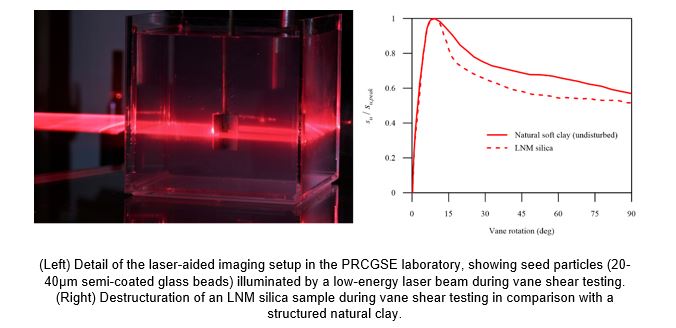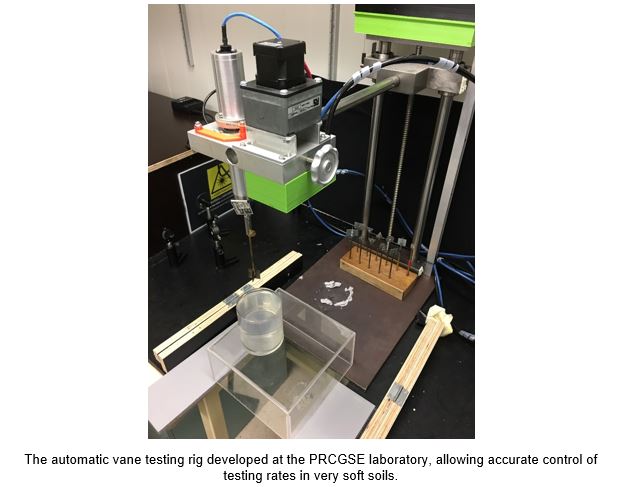Centre for Geotechnical Science and Engineering

Use of transparent surrogate soil mixtures in geotechnical applications
Key Researchers: Dr Laxmi Prasad Suwal, Dr Jubert Pineda, Associate Professor George Kouretzis
INTRODUCTION
Surrogate soil mixtures are artificial materials which are engineered to feature mechanical properties similar to those of natural soft soils (such as estuarine clays or marine deposits). Transparent surrogate mixtures allow to literally peak inside soils, and document the mechanisms leading to soil failure below the ground surface. This is achieved by adding special seed particles in the mixture, which can be illuminated by a low-power He-Ne laser. The movements of these particles during geotechnical testing, such as vane shear testing, are captured by a high-resolution digital camera, and images are processed to calculate the displacement and strain fields developing in soil.
The material used by researchers in the Centre for such applications is LNM silica, an artificial smectite clay which is used as a rheology modifier under the commercial name LAPONITE RD®. When mixed with water, LNM silica forms a transparent thixotropic gel. The main challenge with using such materials to replace natural soils in laboratory-scales physical modelling experiments and tests is to design the engineered mixture so that it features mechanical properties similar to those of natural soft soils. Parameters such as use of additives, water ionic content, gel ageing and pre-consolidation all affect the strength and compressibility of surrogate soil mixtures, and must be carefully considered in the design of experimental processes.
SCIENTIFIC AND ENGINEERING APPROACHES
- Development of methods for the preparation of Laponite gel mixtures of adequate transparency.
- Evaluation of mechanical properties of surrogate soil mixtures via advanced laboratory tests.
- Documentation of parameters affecting the microstructure of gel mixtures using Scanning Electron Microscope and Mercury Intrusion Porosimetry.
- Development of laser-based imaging techniques for tracking soil particle deformations using macrophotography.
APPLICATIONS
- Interpretation of in situ and laboratory tests in soft soils
- Physical modelling of soil-structure interaction
- Modelling of object penetration problems in soils

The University of Newcastle acknowledges the traditional custodians of the lands within our footprint areas: Awabakal, Darkinjung, Biripai, Worimi, Wonnarua, and Eora Nations. We also pay respect to the wisdom of our Elders past and present.

